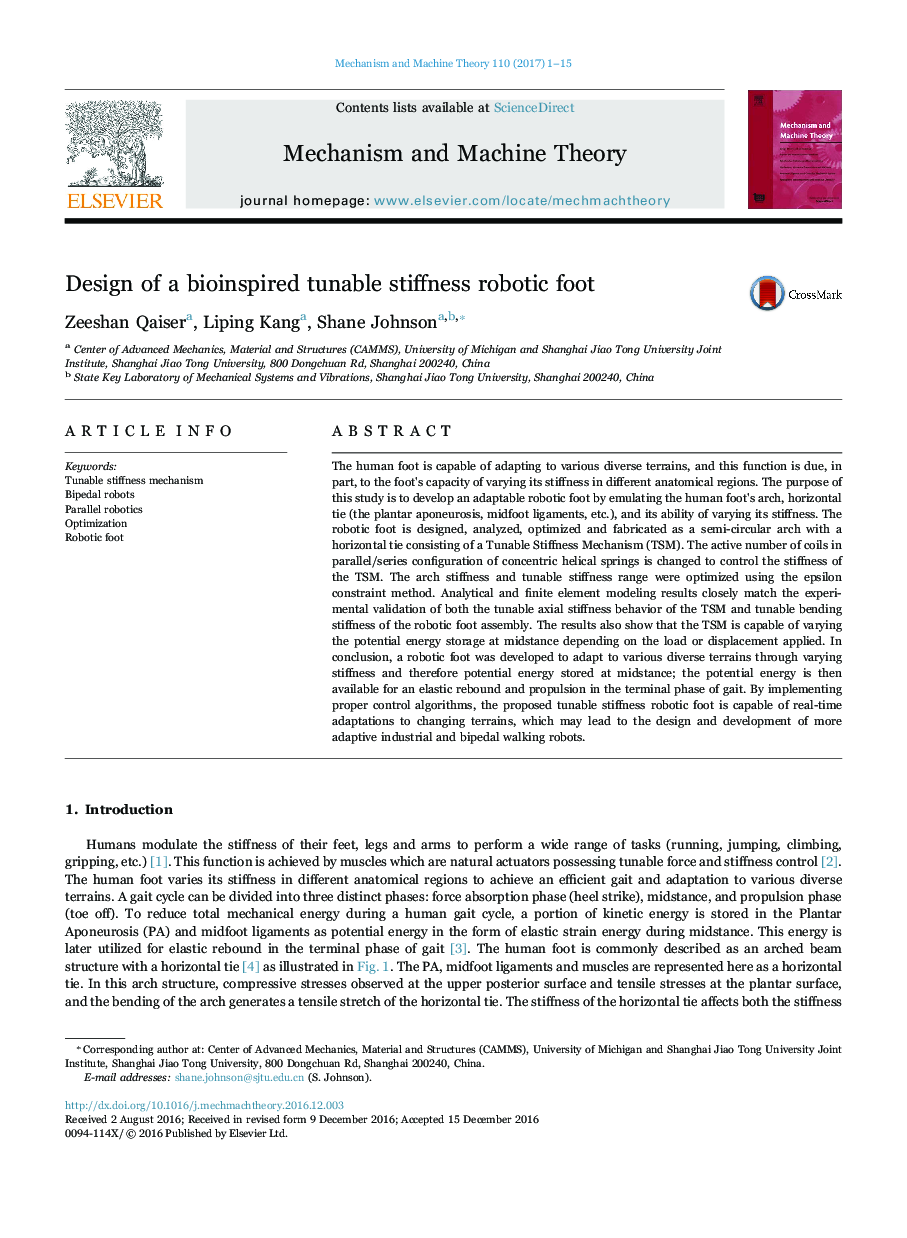| Article ID | Journal | Published Year | Pages | File Type |
|---|---|---|---|---|
| 5019006 | Mechanism and Machine Theory | 2017 | 15 Pages |
Abstract
The human foot is capable of adapting to various diverse terrains, and this function is due, in part, to the foot's capacity of varying its stiffness in different anatomical regions. The purpose of this study is to develop an adaptable robotic foot by emulating the human foot's arch, horizontal tie (the plantar aponeurosis, midfoot ligaments, etc.), and its ability of varying its stiffness. The robotic foot is designed, analyzed, optimized and fabricated as a semi-circular arch with a horizontal tie consisting of a Tunable Stiffness Mechanism (TSM). The active number of coils in parallel/series configuration of concentric helical springs is changed to control the stiffness of the TSM. The arch stiffness and tunable stiffness range were optimized using the epsilon constraint method. Analytical and finite element modeling results closely match the experimental validation of both the tunable axial stiffness behavior of the TSM and tunable bending stiffness of the robotic foot assembly. The results also show that the TSM is capable of varying the potential energy storage at midstance depending on the load or displacement applied. In conclusion, a robotic foot was developed to adapt to various diverse terrains through varying stiffness and therefore potential energy stored at midstance; the potential energy is then available for an elastic rebound and propulsion in the terminal phase of gait. By implementing proper control algorithms, the proposed tunable stiffness robotic foot is capable of real-time adaptations to changing terrains, which may lead to the design and development of more adaptive industrial and bipedal walking robots.
Keywords
Related Topics
Physical Sciences and Engineering
Engineering
Industrial and Manufacturing Engineering
Authors
Zeeshan Qaiser, Liping Kang, Shane Johnson,
